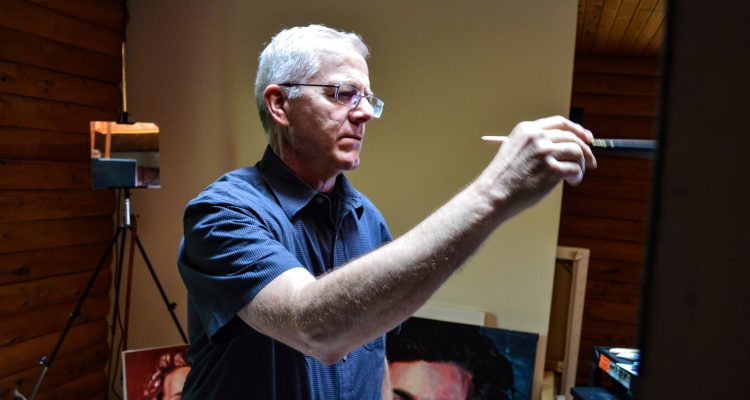He grew up here. Most of his family has always lived here. And, now, after three decades, he lives here again.
Thomas Wharton, brother of long-time Ohio County Commissioner Randy Wharton, returned to Wheeling a few years ago after residing in New York City for more than 30 years because, well, it was time to come home. His father was a salesman, and he was born in Fairmont before the family moved to Parkersburg. By the time Thomas was 4 years old, the Wharton clan moved north to the Warwood neighborhood in Wheeling. Two years later, he found himself in a new home in the Springdale area near Elm Grove.
Wharton was graduated from Triadelphia High School in 1968 after attending Park View and Bridge Street schools, but it was early in his education when he actually began to care about his studies.
“I wasn’t very good at school, to be honest, and they almost held me back in first and second grade because I was having problems with reading,” he admitted. “So I really was going through school bumbling along, and I would make disturbances during class because I wasn’t interested in what the teacher was trying to teach.
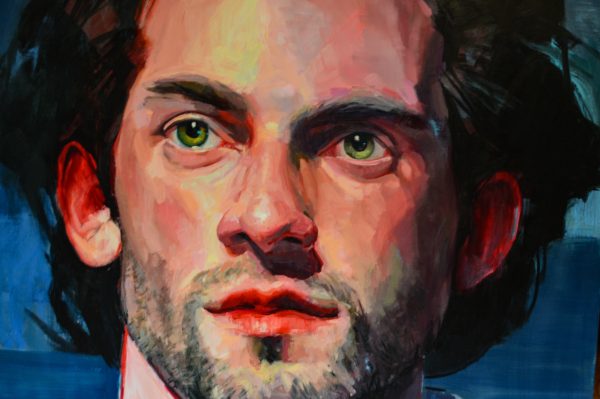
“But then I had this tall woman who was my homeroom teacher and also an English teacher named Irene Smith, and she seemed, at the time, to be very elegant. She smoked cigarettes, she wore red lipstick when most of the teachers didn’t wear it, and I really liked her,” Wharton said. “One day, she found me eating the flowers on her desk. I don’t know why I was doing that, but she caught me, and then she came over and said, ‘I like these, too.” She then sat down with me and ate a flower with me, and, for whatever reason, that changed school for me forever.”
He then left Wheeling for Morgantown to continue his education at West Virginia University, where Wharton planned to major in piano after beginning to tickle the ivories at the age of 12. Once Wharton earned his bachelor’s degree, he opted to gain a master’s degree in applied piano.
But then something changed.
After teaching piano at West Liberty State College for a single academic year, he was done.
“And around that time, I decided that I just didn’t want to do it anymore,” Wharton remembered. “That’s also when Michael and I decided to move to New York City and see what we could do there. I had no idea what that was, but my partner Michael was into journalism, and he had some contracts in the publishing industry.
“So we went. We moved there. I had no idea what I was going to do to make a living, and all I knew was that I knew how to play the piano, so I always had that to fall back on if I had to,” he said. “I didn’t want to do that, obviously, but at least I knew I could.”
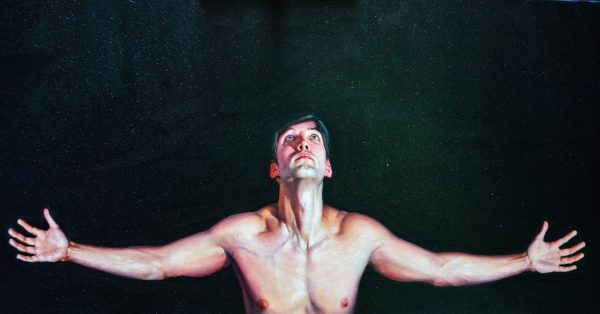
Big City, Little Space
It was a square room with little character, but it was in the big city, and that’s how most lived there unless they resided in a high-rise with the rest of the elite.
But for Thomas and Michael, it was 430 square feet near the middle of what Thomas refers to as a “scary place.”
“Honestly, I pretty much had to be dragged there. I really didn’t like the idea one bit, and I liked it even less after we moved,” he said. “In the early 1980s, I saw New York City as a frightening, scary place. It was dirty, the people were nasty, and it was just awful, but so many people just loved it. That made wonder what was wrong with all of those people,” he said. “And then I was robbed at gunpoint in Central Park the second week we were there, so in the beginning, I really, really hated it.”
He was 30 years old when he initially became a Big Apple resident, and Wharton eventually managed to be hired by a Dutch Publishing Company as a graphic designer. As a member of the firm’s Academic Division, he managed to slice off a chunk of his finger with an X-Acto knife on his first day.
“But what happened that day changed my opinion of the city in a couple of ways,” Wharton remembered. “My boss told me to get it taken care of and to come back the next day, so as I headed out of the office and onto the street with my hand bleeding pretty good, this person all of a sudden gave me his cab so I could get to the ER.
“I didn’t think New Yorkers did things like that,” he said. “That did make a difference to me. I didn’t think about it immediately, but I did afterward.”
He learned his new profession on the job and later formed a design company in 1990. Twenty-one years after serving as the firm’s creative director and client manager, Wharton opted to sell the company in 2011 and concentrate more on his art. Wharton produced and sold portraits, and he also illustrated a children’s book.
“But then there came a point where we knew we just couldn’t stay there,” he explained. “We were both ready to leave New York City, but we really didn’t know where we wanted to go because New York had changed so much. Many of the things I couldn’t stand about the city when I first arrived, I actually learned to appreciate and love, but those things changed because of the big money that came in. Plus, it seemed more crowded, and it seemed as if there was more pressure on people. It was definitely different.
“It made me feel like I was disappearing, and that was a weird feeling,” he continued. “We had some friends out west, so we took a trip out there to see what we thought, and we actually moved to Santa Fe. It was a beautiful place, and there was a big arts community, but ultimately it didn’t work. It just didn’t feel like home, and then I started to realize what would feel like home.”
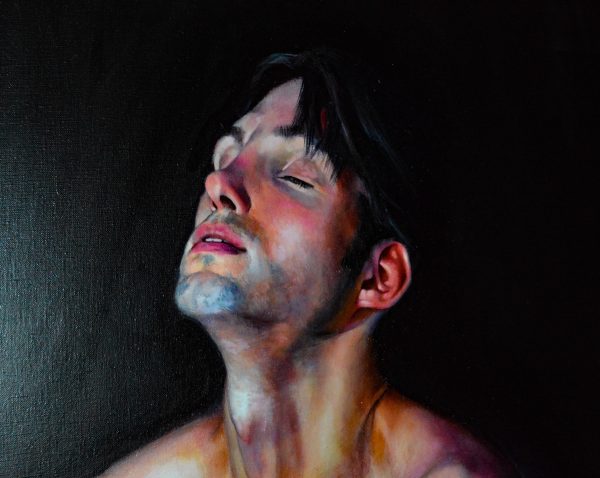
One Rotted Apple
Wharton admits these days that New York City grew on him, and that he eventually felt as if he belonged.
At least until Sept. 10, 2001.
“We lived in an apartment in the West Village that was just above the financial district, and I’ll never forget how beautiful a day it was. It was one of those perfect days,” Wharton explained. “At that time I was a partner in the design and communications firm, and I was preparing to go to the studio when this man who was running down the street told me that a plane had just hit the World Trade Center. Immediately, I didn’t think that was possible.
“Then I walked about a half-block, and there it was, a huge gash in the building. And then things gradually seemed to get weird. Traffic was stopped, people’s doors were wide open, and all the church bells were ringing. It was something I had never experienced before,” he recalled. “You could see that this was very, very bad. I knew people were really suffering, and that’s when I saw a giant ball of flame. The terrorists had hit the second tower. People were screaming.”
Even though Thomas had seen acted-out tragedies on the silver screen and on television on many occasions during his lifetime, living in the middle of it in real-time was unthinkable.
“We all have seen things like that in the movies, but to see it in real life was just unreal somehow,” Wharton said. “When I got back to the apartment I realized that we could see the whole thing from the window. After that I went to the roof where my office was to continue watching from about 12 blocks away, and we were so close we could see the people jumping.
“It was a horrible thing to witness. Seeing someone so desperate that they were willing to take a leap like that. Good Lord!” he continued. “And when the planes hit, they sent tens-of-thousands of pieces of paper that seemed to twinkle in the lights. It was beautiful somehow, but definitely horrifying at the same time. There is just no way to describe the vacant feeling you feel when you see something like that.”
Soon after the deaths of thousands of innocent Americans, Wharton noticed an alter ego had been adopted because no longer did the city’s signature brashness seem so prevalent as before. Instead, the thrilling and frightening aspects of the Big Apple diminished, and suddenly New Yorkers seemed vulnerable.
“A tragedy like that marks the generation, and it was a most important event in my life; that’s for sure, and I don’t think about it often. When I do I remember all of my friends, and those who had lost people, it makes me sad all over again because I relive it again,” he explained. “But it solidified my desire to be more observant of life and of what I see around me. It’s helped me find more beauty, and now I want to see as much as possible. It also helped me listen better, and all of that combined had an impact on my art. For years, I guess, I was searching for some kind of voice, but after 9/11 that voice wasn’t something as concrete as I expected.
“After that tragedy I had learned that, instead, it really was a vague hunch that I couldn’t get out of my mind,” Wharton said. “It’s hard to explain, but before I realized what it was, I would just try to push it aside and ignore it. But then I learned that it was the voice I needed to hear.”
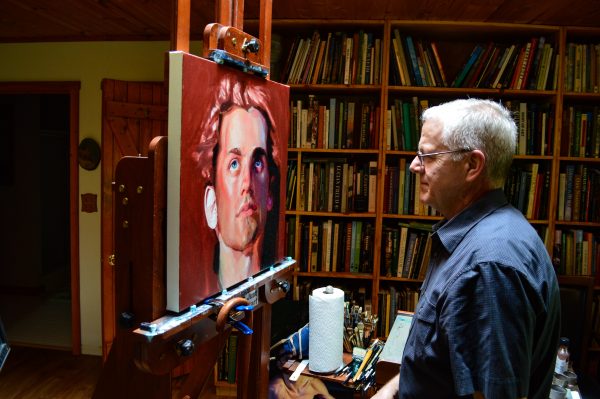
A Changed City
Wharton traveled to Wheeling several times per year from his small flat in the Big Apple to visit his family and friends, and he enjoyed what came over him each time he would finally get his first glimpse of his Friendly City.
“I would experience a physical sensation that relaxed me,” the artist described. “When you were raised in a place like this with the values and the way of thinking, it’s something that works into your fiber. That’s why this was the place I knew I needed to return to.”
But not everything was as pleasant as his excitement about coming home.
“I have to admit that I had to often wonder what in the world was taking place here because of all the decline. It was horrible, and I also wondered just how low it was going to go as far as losing businesses in the downtown area. It was ugly, as much as I hate to say that,” he said. “As soon as I moved home, though, I saw that Wheeling was changing, and now I feel as if the city is on the verge of changing a lot for the better. The good things that have taken place have not happened overnight, I know, but now I feel a different energy.
“And I have noticed that there are more young people here and more people who are middle-aged. When I was here, it seemed like leaving town was the thing to do, and that trend continued for a lot of years. But it appears as if a lot of people have come home and that the younger people have decided to stay here,” he continued. “I also see many things taking place that are very ‘city things’ to do like all of the gardens and the public art. It reminds of me when I was a designer, and I always had to think of something new. That’s what is happening here now. People are thinking of new things to add instead of depending on the aspects that have been here for years and years.”
Wharton’s artwork can be seen and purchased at Etc., a boutique art gallery located along National Road near the Wisk Bakery in the Edgwood neighborhood of Wheeling. His paintings come in all sizes and the pricing varies depending upon a plethora of factors.
“I’m very pleased to now be a part of what is taking place here in Wheeling, and I am more excited about being here than I ever imagined I would be,” he said. “It really does feel like a new world here.
“It sure seems that many things that really gave Wheeling its identity are now shifting toward other things, in business and in many other areas,” Wharton added. “Now people are looking at the potential that is here, and I feel that potential is enormous. It will take a while, and yes the private sector will have to get involved and the vision will need to be clarified, but I believe that will all take place now.”
(Photos by Steve Novotney)


